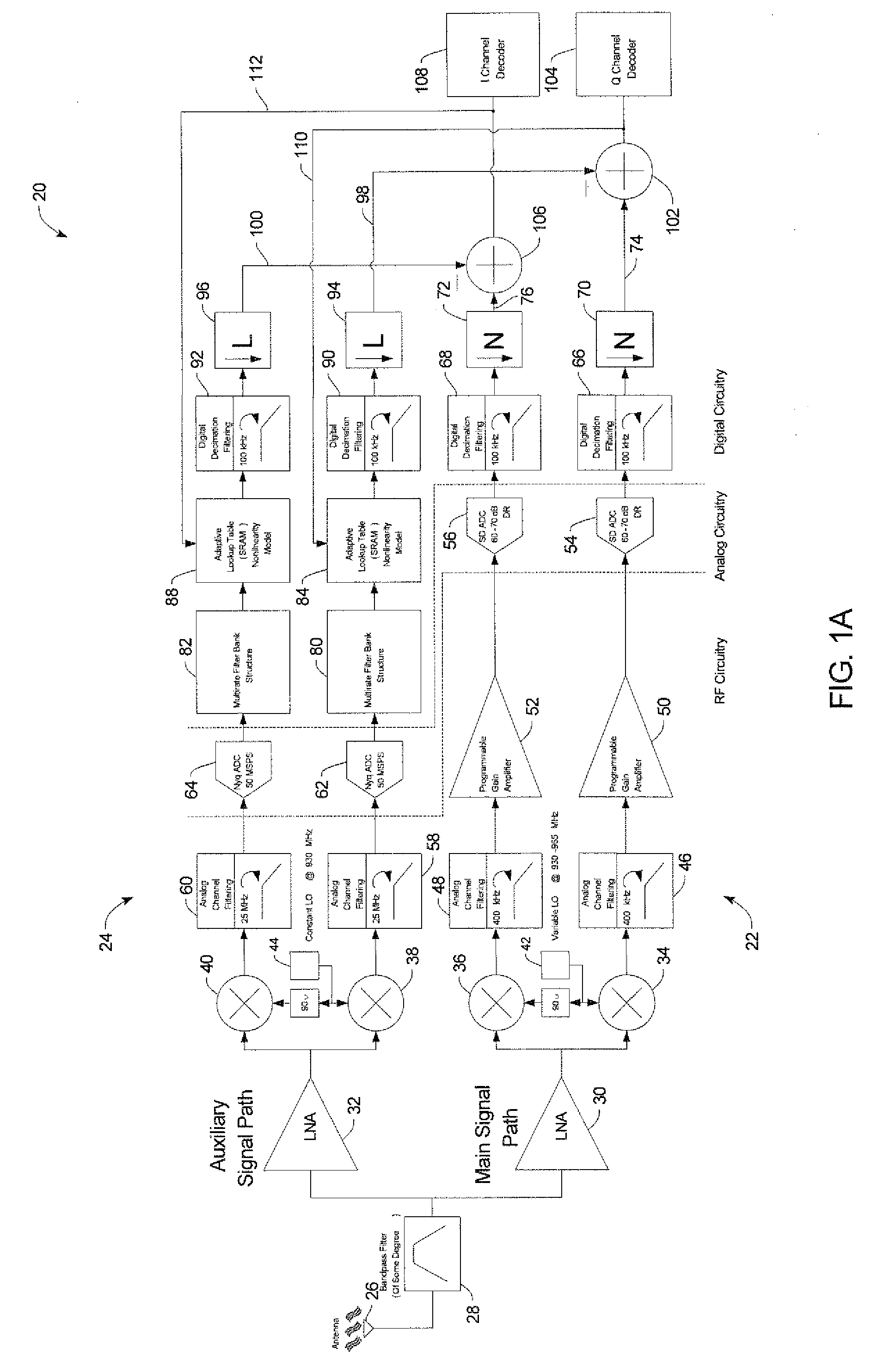Digital and analog im3 product compensation circuits for an RF receiver
a technology of product compensation circuit and receiver, which is applied in the field of digital and analog im3 product compensation circuits of rf receivers, can solve the problems of infeasibility, inability to use one or more expensive off-chip filters, and the signal center frequency is quite high in the first few stages of the rf receiver to remove the signals from the unwanted frequency range. , to achieve the effect of reducing the cost of off-chip filters
- Summary
- Abstract
- Description
- Claims
- Application Information
AI Technical Summary
Benefits of technology
Problems solved by technology
Method used
Image
Examples
Embodiment Construction
[0058]FIG. 1A is a schematic diagram 20 of one embodiment of al RF receiver with attenuated generated IM3 products according to the present invention which has a typical main signal path 22 driven by a low noise amplifier 30 and an auxiliary signal path 24 driven by another low noise amplifier 32. Both of the signal paths 22, 24 receive an RF signal from an antenna 26 which is passed through a bandpass filter 28 to the low noise amplifiers 30, 32. In another embodiment a single LNA could be used for both signal paths. Each of the signal paths 22, 24 has two mixers 34, 36 and 38, 40, respectively, for shifting the RF signal to baseband and separating the I and Q channels, respectively, of the RF signal. The main signal path 22 has a variable local oscillator (LO) 42 which in one embodiment may operate in the frequency range of 935-960 MHz, the frequency range used in GSM cell phones, while the auxiliary signal path 24 may have a LO with a constant frequency of 935 MHz in this embodim...
PUM
 Login to View More
Login to View More Abstract
Description
Claims
Application Information
 Login to View More
Login to View More - R&D
- Intellectual Property
- Life Sciences
- Materials
- Tech Scout
- Unparalleled Data Quality
- Higher Quality Content
- 60% Fewer Hallucinations
Browse by: Latest US Patents, China's latest patents, Technical Efficacy Thesaurus, Application Domain, Technology Topic, Popular Technical Reports.
© 2025 PatSnap. All rights reserved.Legal|Privacy policy|Modern Slavery Act Transparency Statement|Sitemap|About US| Contact US: help@patsnap.com



